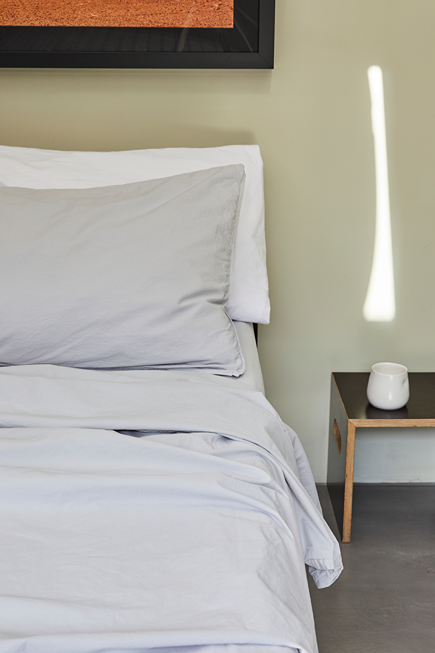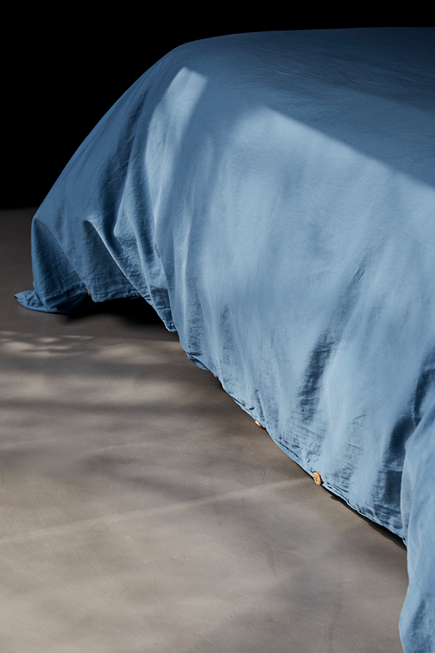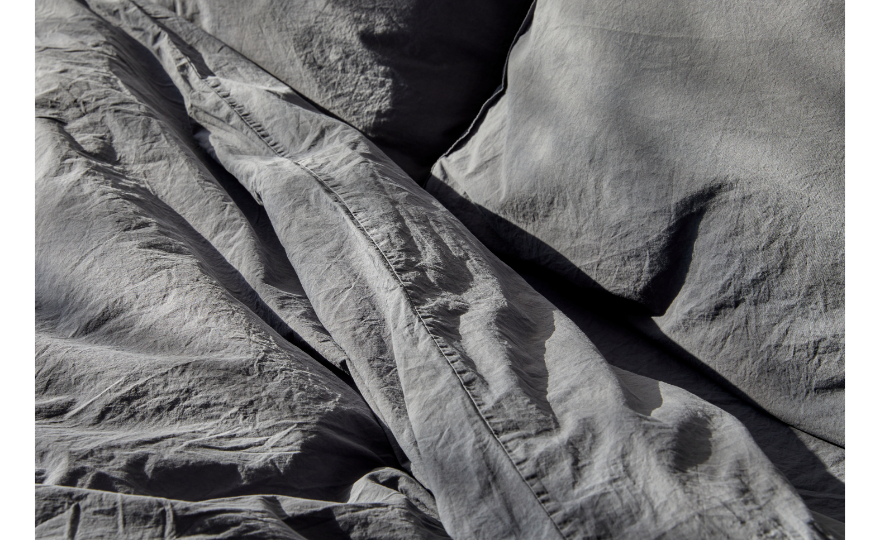365-DAY GUARANTEE | FREE SHIPPING | FREE RETURNS
365-DAY GUARANTEE | FREE SHIPPING | FREE RETURNS
365-DAY GUARANTEE | FREE SHIPPING | FREE RETURNS
Choosing the right bedding can often mean the difference between a restless and uncomfortable night and a great night’s sleep. When it comes to selecting new bedding materials, there are seemingly countless options to choose from. Many consumers tend to look at the differences and similarities between silk sheets vs cotton sheets since both have a plethora of exceptional qualities. So, is silk or cotton better for bedding? The answer depends on several factors including things like your budget, your health needs, and your overall personal preferences. Our goal is to help you understand the similarities between silk and cotton sheets and the differences, so you can determine which options will be the best sheets for you.
Silk is an extremely smooth, luxurious fabric that makes for a wonderful bedding product. This unique material is not just smooth and soft, but it also lends an elegant touch to any sleeping space. With its lustrous shine and ultra-smooth feel, many people opt for silk bedding because of its luxe look and incredibly high-end feel. The color of silk can shift in the light, giving it a multifaceted look that adds to its luxurious aesthetic. Here are some of the benefits of choosing silk bed sheets:


But where does silk come from? This natural fiber is produced by insects that form webs or cocoons. Those naturally made webs and cocoons are made up of a protein called fibroin that is harvested, heated, and then unraveled into thin strands. Afterward, the strands are spun into yarn and then tuned into the premium fabric known as silk. Just like many other fabrics, silk comes in different types. Mulberry silk is the highest quality and is derived from a specific species of worm called the Bombyx Mori, which lives in mulberry trees. The material the worms produce is cultivated under specific controlled environments, resulting in the highest and most consistent quality possible to create these luxury sheets.


Cotton is a natural and breathable fabric that is harvested and processed from cotton plants. When it comes to cotton vs silk and price, cotton is always the more affordable option. However, not all cotton is the same and the quality can depend on several factors including the source, how it is produced, and things like opting for cotton sheets with a higher thread count. Here are some of the many benefits of cotton bed sheets:
Look for high-quality cotton products made from Egyptian cotton or Pima cotton. Unlike regular cotton, the fibers from Egyptian cotton plants are longer and silkier, which makes them feel much softer and more luxurious to the touch. The term Egyptian cotton refers to the actual plant type that the cotton sheet is made from. Pima cotton is another type of cotton made from long fibers, resulting in a much more luxurious feel than standard cotton.

When comparing silk vs cotton sheets, there are some key factors to keep in mind.
Of course, there are several factors to consider when making your choice for the bedding that will provide you with a perfect night’s sleep:
Here are some key questions to ask yourself when you’re thinking about cotton vs silk sheets:

It’s important to practice proper care and maintenance routines for both cotton and silk sheets. Here are some silk sheet care tips to remember:
Here are some tips on how to care for cotton sheets:
Is it worth it to get silk sheets? The price range of silk and cotton sheets varies greatly, but overall, silk tends to be much more expensive. A decent set of silk sheets can start around $100 and go up from there. You can always purchase satin sheets, which have a similar feel but are much lower in price. As for cotton, the price depends on several factors including where and how the cotton was grown and if it’s blended with other materials. Organic cotton sheets tend to cost more, but they’re also much healthier for you and should last longer than traditional cotton sheets. These variations in price exist because of the manufacturer, where the product was made, and what the sheets are actually comprised of. It’s important to ensure that you’re buying high quality sheets from a reputable retailer you trust.
Remember that costs will vary depending on what type of cotton or silk was used. Egyptian and Pima cotton tend to be more expensive than standard cotton or a cotton blend. A set of pure 100% silk sheets can cost as much as $500, so make sure you compare prices and look at the brand and real material content before you decide. If you’re planning to purchase several sets of sheets, then cotton will almost always be the more practical, economical option.
There are some eco-friendly silk and cotton options to choose from, which is another important factor when you’re shopping for new luxury bedding.
As you can see, there are some key differences and similarities when it comes to silk sheets vs cotton. When it comes to affordability and breathability, cotton tends to be the winner. However, if it’s luxury you’re after, then silk sheets could be a better choice. Both materials are generally eco-friendly and sustainable, so it’s vital to select the material that will provide you with the best sleep quality possible based on your unique needs. At Or & Zon, we offer a wide range of high-quality bedding options made from organic materials that will ensure you experience a restful night of healthy sleep for many years to come.
